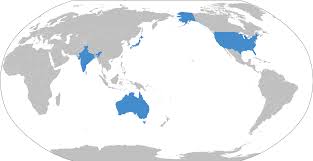Understanding Quad Countries: USA, India, Japan, Australia

Introduction
The Quad countries, comprising the United States, India, Japan, and Australia, have emerged as a pivotal strategic alliance in the Indo-Pacific region. Formally known as the Quadrilateral Security Dialogue, this coalition aims to strengthen regional security, foster economic collaboration, and uphold the rules-based international order. As global dynamics shift, understanding the activities and impact of the Quad has never been more crucial for stakeholders worldwide.
Recent Developments
This partnership has gained momentum recently, particularly in response to China’s growing assertiveness in the South China Sea and broader Indo-Pacific region. For instance, in September 2023, Quad leaders held a summit in Washington, D.C., where they reaffirmed their commitment to a free and open Indo-Pacific. The summit resulted in a joint statement emphasizing the importance of maritime security and climate change resilience.
In addition to military cooperation, Quad countries are also working on strengthening supply chains, ensuring vaccine distribution, and addressing cyber threats. These collaborative efforts reflect the nations’ shared interests in promoting stability and prosperity in the region.
Challenges and Future Prospects
Despite the strong collaboration, the Quad faces significant challenges, including differing national priorities and approaches to engagement with China. Each member of the Quad has its own unique relationship with Beijing, making consensus on strategies more difficult. However, recent events have underscored the necessity of unity, particularly in the face of increased geopolitical risks.
Looking ahead, the Quad is expected to further solidify its role as a key player in regional and global politics. Future meetings, scheduled for early 2024, are likely to focus on expanding joint military exercises and enhancing information-sharing capabilities to maintain a strategic edge in the Indo-Pacific.
Conclusion
The Quad countries represent a formidable alliance aiming to stabilize the Indo-Pacific region amidst a rapidly changing geopolitical landscape. The collaborative efforts in security, economy, and governance by the Quad can significantly influence the international order. Stakeholders and observers must remain vigilant about the developments within this alliance as they continue to shape the future dynamics of global politics.









